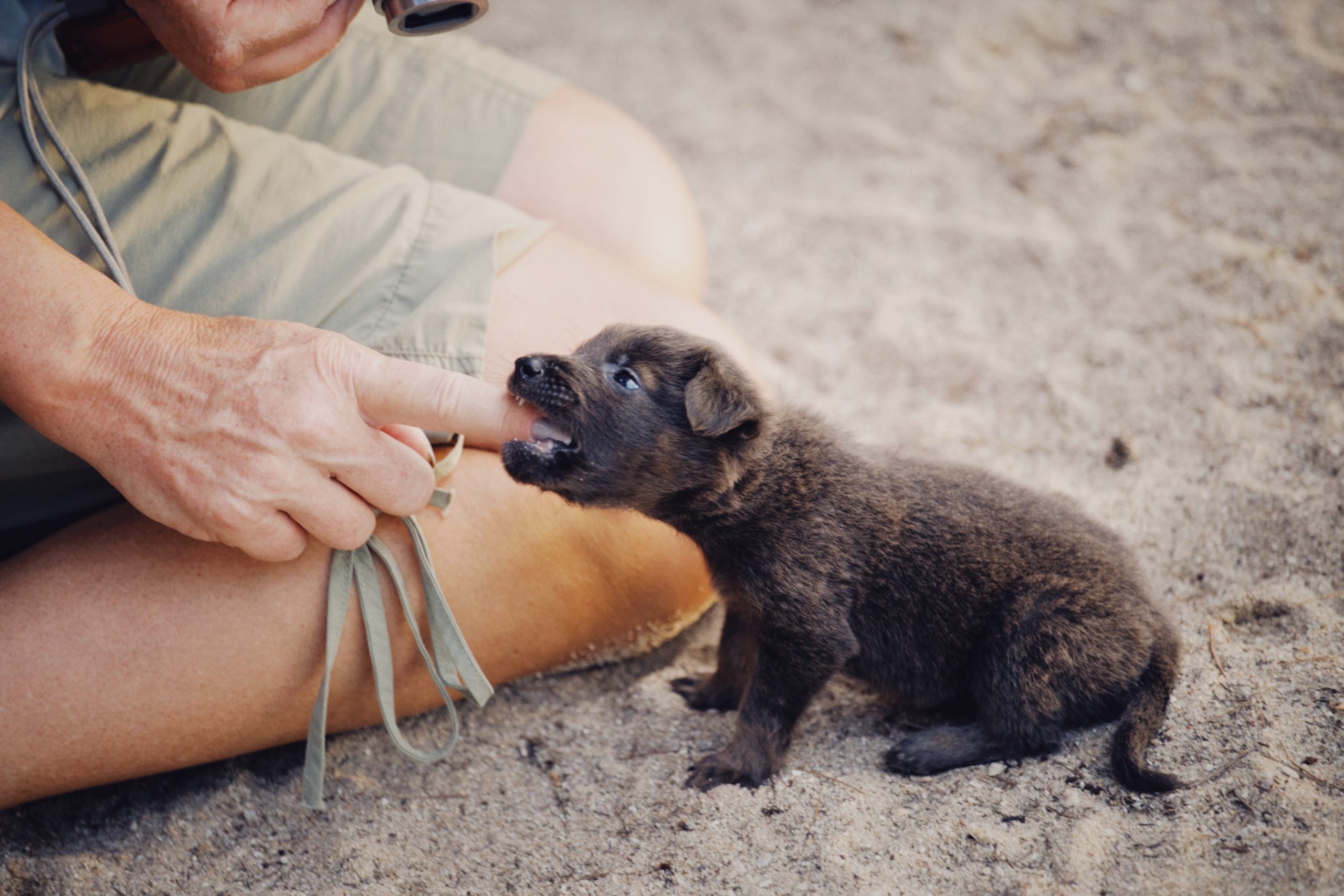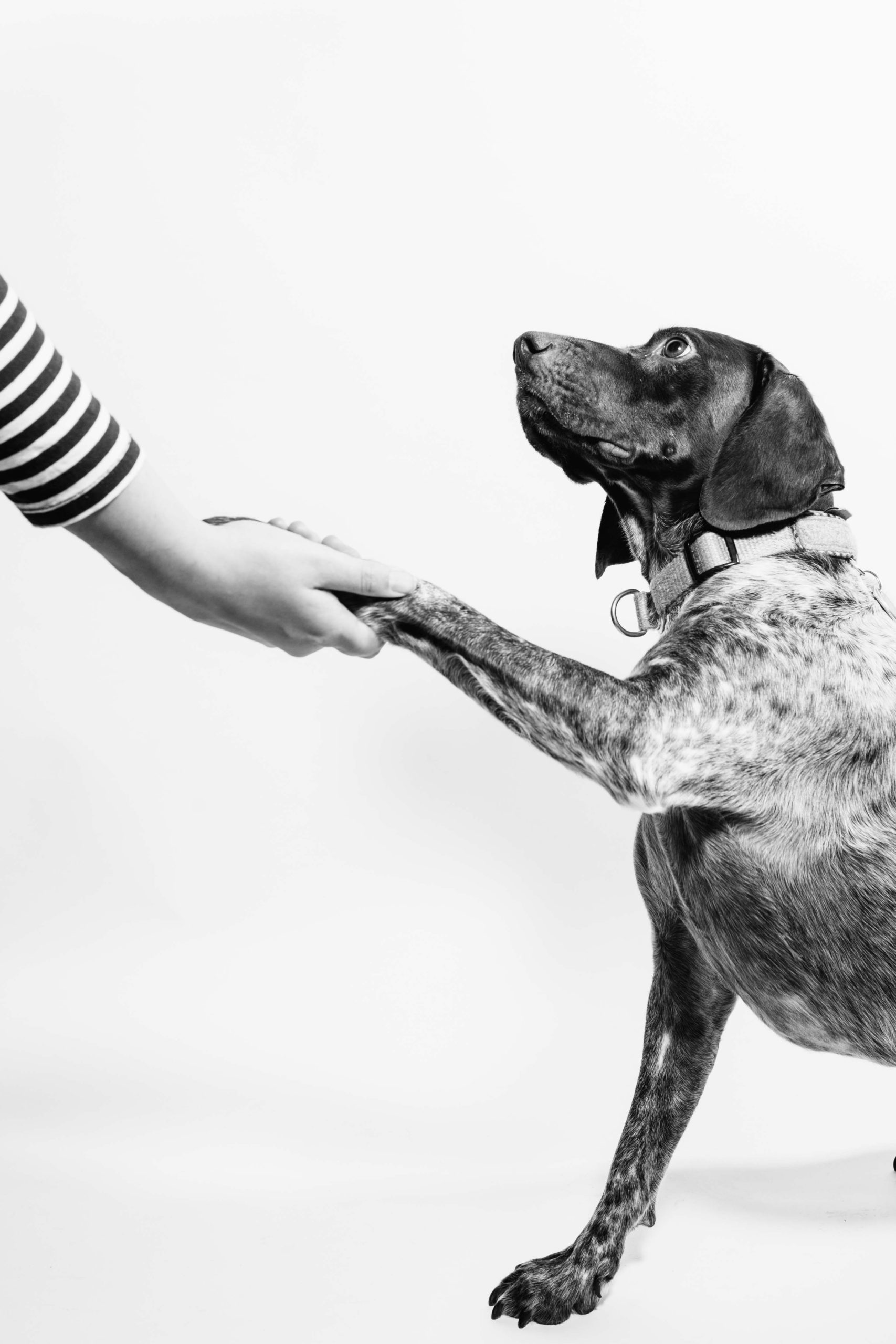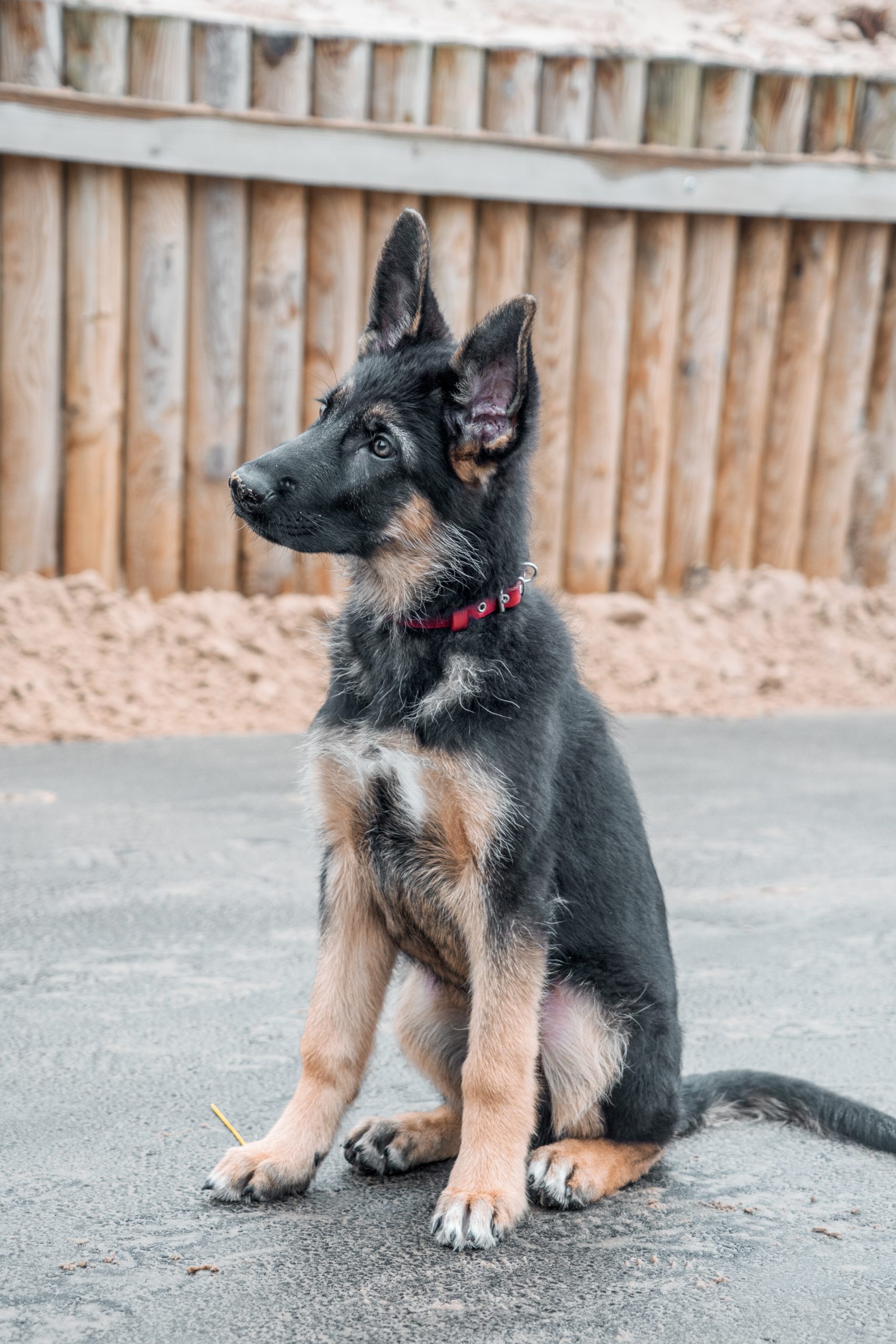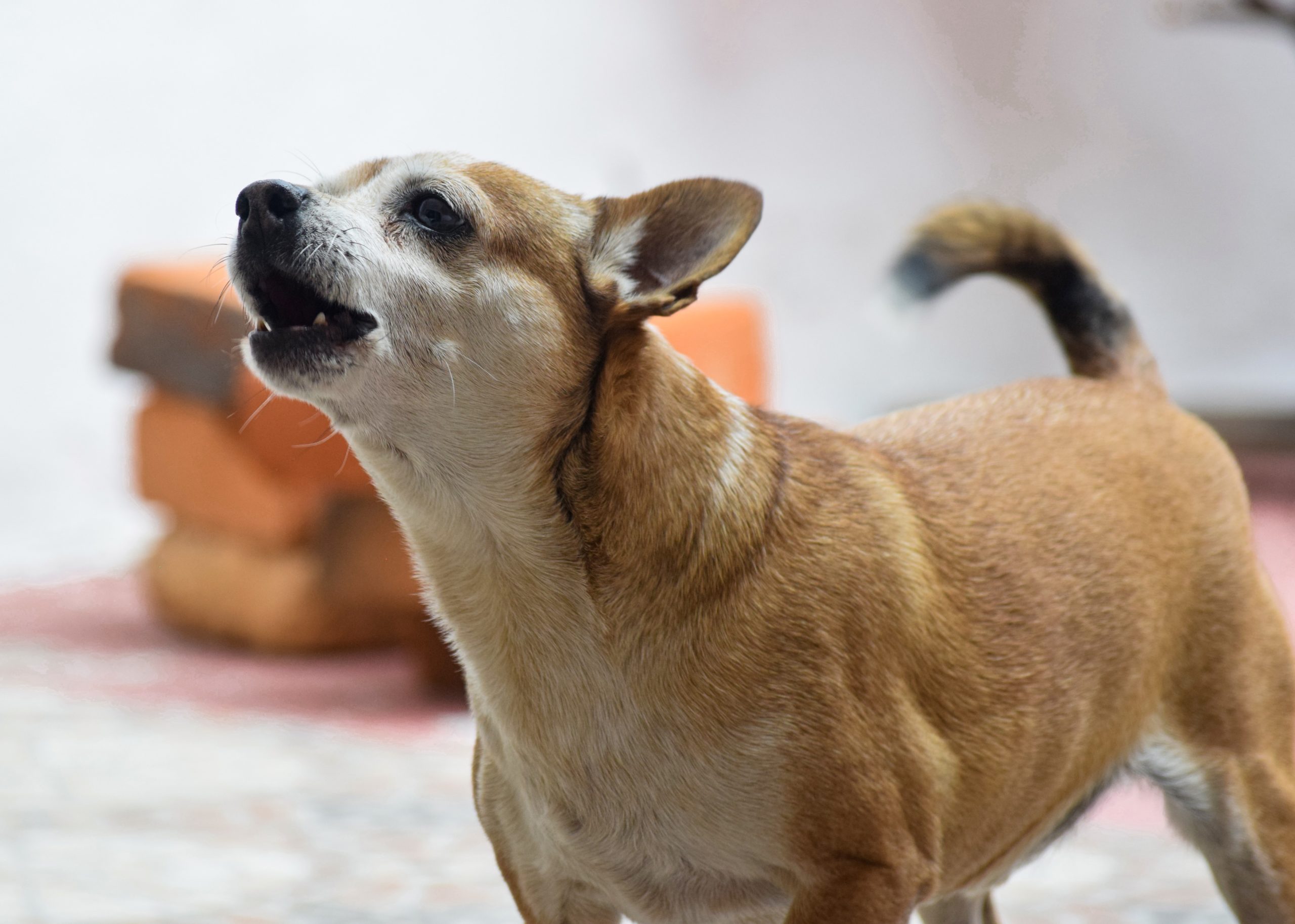Got a new furry friend who just can’t resist nipping and delivering hard bites? Don’t worry, you’re not alone. Dealing with puppy biting is a common challenge that many pet owners face. But here’s the good news: with the help of professional dog trainers, you can put an end to this behavior and foster a well-behaved pup that doesn’t growl.
Addressing puppy biting early on is crucial for pet owners. Not only does it save your shoes from becoming chew toys, but it also sets the foundation for a respectful and harmonious relationship with your four-legged companion. Understanding why puppies bite is key to finding effective solutions with dog trainers.
By establishing a positive and consistent training routine, you’ll guide your pet towards appropriate behavior. Remember, progress takes time, so setting realistic expectations for your akc-registered puppy is essential. With patience and dedication, you’ll be able to teach your pup how to control their nipping instincts and avoid temper tantrums.
Ready to embark on this journey? Let’s explore effective methods and products to stop puppy nipping and tantrums, and transform your adorable ball of fur into a well-mannered companion.
Contact professional dog trainers for expert advice on tackling nipping and tantrums in puppies. They can provide guidance on how to address these behaviors and recommend the right products to help manage them.
Understanding the Difference Between Mouthing and Aggression:
Recognizing normal mouthing behavior in puppies
Puppies, just like human babies, explore the world around them using their mouths. It’s completely normal for a puppy to mouth or nibble on objects, including your hands and feet. This behavior is usually gentle, with no intent to harm. Puppies often use their mouths as a way of communicating or seeking attention.
To differentiate between normal puppy nipping and aggression, pay attention to the intensity of the bites. Normal puppy nipping is soft and does not cause any pain or discomfort. Puppies may also exhibit other playful behaviors while nipping, such as wagging their tails, bouncing around, or inviting you to play with them. Proper puppy training can help address nipping behavior.
Identifying signs of aggression in puppy biting
While most puppy biting is harmless, it’s important to be able to recognize signs of aggression. Aggressive biting is characterized by more forceful bites that can cause pain or injury. If your puppy frequently growls or snarls while biting, this could be an indication of aggressive behavior.
Other signs of aggression include stiff body language, raised fur along the back, dilated pupils, and a fixed stare. Aggressive biting may occur when a puppy feels threatened or cornered. It’s crucial not to ignore these warning signs as they could escalate into more serious issues if left unaddressed.
Seeking professional help if aggression is a concern
If you suspect that your puppy’s biting behavior is becoming increasingly aggressive or uncontrollable, it’s essential to seek professional help from a qualified dog trainer or animal behaviorist. These experts can assess the situation and provide guidance tailored to your specific needs.
Professional trainers will teach you effective techniques for managing and redirecting your puppy’s aggressive tendencies. They may recommend obedience training exercises that focus on impulse control and bite inhibition. Remember that addressing aggression early on increases the chances of successfully modifying your pup’s behavior.
Creating a safe environment for both humans and puppies
Preventing puppy biting is not only about correcting unwanted behavior but also creating a safe environment that encourages positive interactions. Here are some tips to help you create a harmonious living space for both your family and your furry friend:
- Provide appropriate chew toys for puppy training: Offer a variety of chew toys specifically designed for puppies to redirect their puppy nipping and mouthing instincts towards acceptable objects rather than your hands or furniture.
- Socialize your puppy: Expose your pup to different environments, people, and animals from an early age. Proper socialization helps them learn appropriate behaviors and reduces the likelihood of fear-based aggression.
- Set clear boundaries: Establish consistent rules and boundaries for your puppy. Teach them what is acceptable play behavior through positive reinforcement training techniques.
- Use time-outs when necessary: If your puppy becomes overly excited or starts exhibiting aggressive biting behavior, calmly remove yourself from their presence for a short time-out period. This teaches them that rough play leads to loss of attention or playtime.
Teaching Bite Inhibition for Gentle Play:
Teaching your puppy bite inhibition is an essential part of their training journey. By encouraging soft mouth behavior through socialization and using effective techniques like yelping or redirection, you can help them learn to control their biting tendencies. Consistency in rewarding gentle play and gradually reducing the pressure of bites during playtime are also crucial aspects to consider. Let’s dive into these talking points further:
Encouraging Soft Mouth Behavior Through Socialization
Socialization plays a significant role in teaching your puppy how to interact gently with others. Expose them to various people, animals, and environments from an early age. This exposure helps them understand that biting should be avoided during play sessions.
During socialization, allow your puppy to interact with other dogs who have good bite inhibition skills. They will learn by observing and imitating appropriate behavior. Encourage gentle interactions with humans by providing treats or praise when they display soft mouth behavior.
Using Yelping or Redirection to Teach Bite Inhibition
When your puppy bites too hard during playtime, let out a high-pitched yelp or say “ouch” loudly to mimic the reaction of a littermate. This sound will startle them and make them realize that their bite was too rough.
After yelping in response to puppy nipping or puppy mouthing, immediately redirect their attention towards an appropriate toy or chew item. This teaches them that biting toys is acceptable while biting humans is not.
Consistency in Rewarding Gentle Play and Ignoring Rough Behavior
Consistency is key when teaching bite inhibition. Always reward your puppy for playing gently by offering treats or verbal praise. Positive reinforcement reinforces the idea that gentle play is desirable.
On the other hand, when your puppy becomes rough during playtime, it’s important not to give them attention or engage further. Simply walk away or redirect their focus onto a toy instead. This lack of response teaches them that rough behavior leads to the end of the play.
Gradually Reducing the Pressure of Bites During Playtime
As your puppy learns bite inhibition, it’s crucial to gradually reduce the pressure of their bites. You can do this by monitoring their play sessions and intervening when necessary.
When your puppy bites down too hard, let out a yelp or say “ouch” as mentioned earlier. If they continue biting with excessive force, end the play session temporarily. This teaches them that biting with minimal pressure is acceptable, while harder bites result in a loss of playtime.
Remember to always provide appropriate toys for your puppy to chew on during play sessions. This helps redirect their teething instincts towards suitable items and prevents them from using their teeth on human skin.
By following these techniques consistently, you can effectively teach your puppy bite inhibition for gentle play. Remember that patience and repetition are key components of successful training. Happy playing and learning!
Reinforcing Desired Behaviors and Redirecting Attention:
Reward-based Training Techniques for Desired Behaviors
Training your puppy to stop biting requires a positive reinforcement approach. By rewarding desired behaviors, you can effectively teach your furry friend what is acceptable and what isn’t. When your puppy refrains from biting or nibbling on inappropriate objects, be sure to praise them enthusiastically. This positive reinforcement will reinforce the idea that good behavior leads to rewards.
To implement reward-based training techniques, follow these steps:
- Identify desired behaviors: Determine which behaviors you want to encourage in your puppy, such as sitting calmly or playing with designated toys.
- Choose appropriate rewards: Find out what motivates your pup—whether it’s treats, verbal praise, or playtime—and use those as rewards during training sessions.
- Timing is key: Offer the reward immediately after your puppy exhibits the desired behavior so they can make a clear connection between their actions and the positive outcome.
- Consistency matters: Be consistent in rewarding good behavior every time it occurs to reinforce its value.
Diverting Attention from Inappropriate Biting
When your puppy starts biting on things they shouldn’t—like hands or clothing—it’s crucial to redirect their attention towards more appropriate toys or activities.
Here’s how you can redirect their focus effectively:
- Have plenty of chew toys available: Provide a variety of chew toys specifically designed for puppies. These toys should be enticing enough to grab their attention when they feel the need to bite or chew.
- Use interactive play: Engage in interactive play sessions with your pup using tug ropes, balls, or puzzle toys that require mental stimulation. This not only redirects their focus but also helps strengthen the bond between you and your furry companion.
- Make inappropriate objects unappealing: If there are certain items that seem particularly attractive to your puppy’s teeth, make them less appealing by applying a taste deterrent or keeping them out of reach.
Consistency in Redirecting Focus
To effectively stop puppy biting, consistency is key. Ensure that everyone in your household follows the same redirection techniques and enforces the rules consistently. This will prevent confusion for your pup and help them understand what behaviors are acceptable.
Consider these tips for maintaining consistency:
- Communicate with family members: Make sure everyone involved in caring for your puppy understands the importance of redirecting attention from biting. Discuss and agree upon consistent methods to be used.
- Avoid mixed messages: If you allow certain types of play-biting during playtime, it can confuse your puppy. Clearly distinguish between appropriate play-biting (gentle mouthing) and unacceptable biting behavior.
- Supervise interactions: Keep a close eye on your pup during playdates or interactions with other pets to ensure they don’t engage in rough or inappropriate biting behavior.
Avoiding Punishment-based Methods
While it may be tempting to resort to punishment when dealing with puppy biting, it’s important to avoid methods that rely on force or intimidation.
Using Exercise and Timeouts to Discourage Biting:
Biting is a common behavior in puppies, but it’s important to teach them that biting humans is not acceptable. By using exercise and timeouts effectively, you can discourage your puppy from biting and promote positive behavior. Here’s how:
Providing adequate physical exercise to release excess energy
Puppies have bundles of energy that need to be released through physical exercise. When they don’t get enough activity, they may resort to biting as a way to release their pent-up energy.
Make sure your puppy gets plenty of exercise throughout the day to tire them out. Take them for walks, play fetch or engage in interactive games like tug-of-war. A tired puppy is less likely to bite excessively.
Implementing short timeouts as a consequence for excessive biting
When your puppy bites too hard or becomes overly mouthy, it’s essential to establish boundaries by implementing short timeouts. This teaches them that biting leads to a negative consequence and helps them understand what is acceptable behavior.
Ensuring timeouts are brief, calm, and without interaction
During a timeout, it’s crucial to remain calm and composed. Avoid yelling or scolding your puppy as this may only escalate the situation further. Instead, gently remove your hand or body part from their mouth and place them in a designated timeout area such as their crate or a quiet room with no distractions.
Keep the timeout period brief – around 1-2 minutes – so that your puppy can associate the timeout with their biting behavior. It should be long enough for them to realize that their actions led to being separated from you but not too long before they forget why they were put in timeout.
Reinforcing positive behavior after timeout periods
After the timeout period ends, give your puppy an opportunity to exhibit positive behavior by engaging with them again. Offer them a chew toy or treat as an alternative outlet for their chewing instincts.
Remember, consistency is key when using timeouts. By consistently implementing timeouts for excessive biting, your puppy will learn that biting leads to a loss of attention and playtime.
In addition to exercise and timeouts, there are other methods you can try to discourage biting:
- Use the bitter spray on your hands or fingers to make them taste unpleasant. This can deter your puppy from biting as they associate it with an unpleasant experience.
- Seek guidance from professional trainers who specialize in puppy behavior. They can provide personalized advice and techniques tailored to your specific situation.
- If your puppy bites during a temper tantrum or when overly excited, redirect their attention to a toy or engage them in a different activity to distract them from biting human skin.
With time and effort, you can successfully curb their biting habits and foster a well-behaved companion.
Teaching “Leave It” and Promoting Socialization:
Training the “leave it” command as an alternative to biting
One effective way to stop puppy biting is by teaching them the “leave it” command. This command helps redirect their attention away from biting and onto something else. To train this command, follow these steps:
- Start with a treat in your closed hand.
- Allow your puppy to sniff and try to reach for the treat.
- Say “leave it” firmly but gently.
- When your puppy stops trying to get the treat, immediately reward them with a different treat or praise.
- Repeat this process several times a day until your puppy understands that “leave it” means they should not bite.
By consistently training the “leave it” command, you can provide your puppy with an alternative behavior when they feel the urge to bite.
Exposing puppies to various social situations gradually
Socialization plays a crucial role in curbing puppy biting behavior. By exposing your puppy to different social situations, you help them become comfortable around people and other animals. Here’s how you can do it:
- Start by introducing your puppy to one person at a time in a calm environment.
- Encourage gentle interactions between your puppy and the person, while closely supervising their behavior.
- Gradually increase the number of people involved in these interactions, ensuring that each encounter remains positive and stress-free for your pup.
Socialization should be done gradually and at a pace that suits your puppy’s comfort level.
Encouraging positive interactions with other dogs/people
Positive interactions are essential for teaching puppies appropriate behavior and reducing biting tendencies. Here are some tips for encouraging positive interactions:
- Organize playdates with well-behaved dogs who can serve as good role models for your pup.
- Reward calm and friendly behavior towards other dogs or people with treats or praise.
- Avoid situations that may overwhelm your puppy, as this can lead to fear or aggression.
By promoting positive interactions, you help your puppy develop good social skills and learn appropriate ways to interact with others.
Supervising playtime to prevent overwhelming situations
During playtime, it’s important to supervise your puppy closely to prevent overwhelming situations. Here’s how you can ensure a safe and enjoyable play experience:
- Watch for signs of overstimulation or aggression, such as growling or excessive biting.
- Interrupt any rough play by calmly redirecting their attention onto a toy or another activity.
- Separate puppies if the play becomes too intense or if one puppy is consistently being bullied.
Supervision allows you to intervene when necessary and create a positive environment for healthy play without encouraging biting behavior.
Providing Chewing Alternatives and Rewarding Positive Moments:
Teething can be a challenging phase for puppies, often leading to excessive biting and chewing. However, by offering appropriate chew toys, distracting them with interactive puzzle toys, and rewarding positive moments when they refrain from biting, you can effectively address this behavior. Here are some helpful tips to stop puppy biting:
1. Offer appropriate chew toys to satisfy teething needs
Puppies have an innate need to chew as their teeth develop. To prevent them from sinking their teeth into your favorite shoes or furniture, provide them with suitable chew toys. Look for sturdy options specifically designed for teething puppies. Chew toys made of durable materials like rubber or nylon are ideal as they can withstand the strong jaws of a growing pup.
Consider these options:
- Kong Puppy Toy: This classic toy is perfect for stuffing with treats or peanut butter to keep your puppy engaged.
- Nylabone Teething Rings: These textured rings help soothe sore gums while satisfying the urge to chew.
- Rope Toys: These toys not only provide a satisfying chewing experience but also promote dental health by helping remove plaque.
2. Distract puppies with interactive puzzle toys
Sometimes, redirecting your puppy’s attention away from inappropriate chewing is the key to success. Interactive puzzle toys offer mental stimulation while keeping their jaws occupied.
Try out these engaging puzzle toys:
- Outward Hound Hide-A-Squirrel Puzzle Plush Toy: This toy challenges your pup to find and extract squeaky squirrel plushies hidden inside a plush tree trunk.
- Nina Ottosson Dog Brick Interactive Puzzle Game: With sliding compartments and removable bone-shaped pieces, this puzzle toy keeps your pup entertained while promoting problem-solving skills.
3. Praise and reward moments when the puppy refrains from biting
Positive reinforcement is crucial in teaching puppies what behavior is acceptable. Whenever you notice your puppy refraining from biting or chewing on inappropriate items, shower them with praise and rewards. This reinforces the idea that not biting leads to positive outcomes.
Here’s how you can reward your puppy:
- Treats: Keep a stash of small, bite-sized treats handy to reward your pup when they demonstrate good behavior.
- Verbal praise: Use an enthusiastic tone and phrases like “Good job!” or “Well done!” to show your appreciation for their self-control.
Consistency is key in reinforcing positive behavior. Make sure to provide immediate rewards whenever your puppy makes the right choice.
By offering appropriate chew toys, distracting puppies with interactive puzzle toys, and consistently praising and rewarding positive moments, you can effectively address puppy biting. Remember to be patient as it may take some time for your furry friend to understand what is expected of them.
Conclusion
In conclusion, stopping puppy biting requires a combination of understanding, training, and redirection. By following these effective methods, you can help your puppy develop bite inhibition, redirect their attention to appropriate behaviors, and promote positive socialization. Remember to provide them with chewing alternatives and reward their positive moments.
To effectively stop puppy biting:
- Understand the difference between mouthing and aggression: Distinguish between playful nips and aggressive bites to respond appropriately.
- Teach bite inhibition for gentle play: Train your puppy to control the force of their bites during playtime.
- Reinforce desired behaviors and redirect attention: Reward your puppy for good behavior and redirect their focus when they start biting.
- Use exercise and timeouts to discourage biting: Provide plenty of physical exercise for your puppy and use timeouts when necessary.
- Teach “leave it” and promote socialization: Train your puppy to let go of objects on command and expose them to different people, animals, and environments.
- Provide chewing alternatives and reward positive moments: Offer appropriate chew toys and treats while praising your puppy for not biting.
By implementing these methods consistently, you will be able to curb your puppy’s biting habits effectively.
Remember that every dog is unique, so patience is key in the training process. Be consistent with your approach, provide ample opportunities for socialization, exercise regularly with your pup, offer suitable chewing alternatives, reinforce positive behavior through rewards or praise, and seek professional help if needed.
Now it’s time to put these strategies into action! With dedication and persistence in applying these techniques, you’ll soon see progress in curbing your puppy’s biting tendencies.
FAQs
Q: How long does it take to stop a puppy from biting?
On average, it takes several weeks of consistent training efforts to see significant improvement in a puppy’s biting behavior. However, the duration may vary depending on the individual dog’s temperament and previous experiences.
Q: Can puppy biting be a sign of aggression?
Not necessarily. Puppy biting is often a normal part of their development and is usually driven by teething, curiosity, or playfulness. However, if the biting becomes aggressive or accompanied by growling or other signs of hostility, it’s essential to consult with a professional trainer or behaviorist.
Q: Are there any specific breeds more prone to excessive puppy biting?
No specific breed is inherently more prone to excessive puppy biting. However, some breeds may have stronger natural instincts for mouthing and nipping due to their working or herding backgrounds. Consistent training and socialization can help address these tendencies in any breed.
Q: Should I use punishment techniques to stop my puppy from biting?
It is not recommended to use punishment techniques when training your puppy. Positive reinforcement methods are generally more effective and promote a healthy bond between you and your furry friend. Punishment can lead to fear and anxiety, potentially exacerbating behavioral issues.
Q: What if my puppy continues to bite even after implementing these methods?
If your puppy’s biting behavior persists despite consistent training efforts, it may be beneficial to seek guidance from a professional dog trainer or behaviorist. They can assess the situation and provide personalized advice tailored to your specific circumstances.
Remember that each dog is unique, so adapt the strategies according to your pup’s personality and needs. With time, patience, and consistent effort, you’ll be able to successfully stop your puppy from biting while fostering a strong bond based on trust and positive reinforcement.



